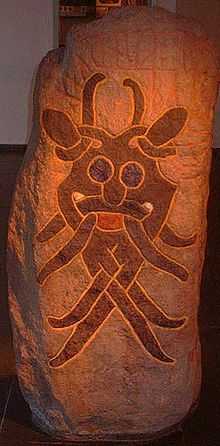Moesgård Museum

Moesgård Museum is situated at Moesgård manor in Højbjerg, a suburb of Aarhus, Denmark. It is both a regional museum and a dedicated museum for archaeology and ethnography. It cooperates with the Institute of Prehistoric Archaeology, Medieval and Renaissance Archaeology, Ethnography and Anthropology at Aarhus University. The main part of the museum’s collection of archaeological artefacts is Danish, even though the museum possesses a rather large amount of archaeological material – known as The Ethnographical Collections – from Bahrain and other countries surrounding the Gulf. The Ethnographical Collections contains almost 50.000 artefacts from all over the world. They are used both for research and exhibitions. Besides artefacts The Ethnographical Collections contains photographic material, films and sound recordings. The museum’s exhibitions presents several unrivalled archaeological findings from Denmark’s ancient past, amongst others the Grauballe Man, the world’s best preserved bog body and the large ritual weapon caches from Illerup Ådal, testifying the power struggles and the warfare of the Iron Age. Furthermore the collection contains seven local rune stones. The main exhibition will be closed on 1. October 2012 due to rearrangements of the archaeological collections in Moesgård Museums new building, located only a short distance from the old manor house. The new museum will be open to visitors in 2014.
The Viking houses and the stave-church at Moesgård Museum
In the surrounding area of Moesgård, an open-air museum of several reconstructions have been made, each one reflecting a part of Denmark’s past. North of the museum two houses and a stave-church from the Viking Period have been build. First is a house from the Viking Age town of Hedeby near Schleswig, Germany. It has been dated to the time around 870 AD and is interpreted as the home of a craftsman’s or trader’s family. The other house is a reconstruction of a pit-house Viking Age Aarhus, from about 900 AD. Pit-houses are small huts, dug half-way into the ground, which could be used as dwellings, workshops or storerooms.
On a small hill behind the houses a stave-church has been erected together with a bell frame. None of the original stave-churches have survived, but the floor and post-holes from a stave-church were excavated under the present Hørning Church near Randers in 1960. Compared to the stone churches it was quite a small building, 31 feet long and 15 feet wide. Also preserved from the stave-church in Hørning was a portion of the so-called hammer-beam, the horizontal beam just under the roof-projection, which held the vertical planks. The ”Hørning-plank” was found as early as 1887 during a restoration of the walling of the present church. It can be seen in the Danish National Museum. On the out side the hammer-beam from Hørning was ornamented with the writhing serpents characteristic – of the Late Viking Period. On the basis of the growth-rings in the timber, it has been dated to about the year 1060, to the transition from the Viking Age Period to the Middle Ages. At the excavation site in Hørning, traces of a bell frame were discovered. This has also been reconstructed just in front of the church entrance. The church bell has been cast at Moesgård following a 900-year-old description of bell casting. It is a replica of the almost 800-year-old bell from Smollerup church near Viborg.
The surroundings
The estate of Moesgård covers 100 hectares of park, forest, open fields and shoreline, and extends from the museum buildings down to Aarhus Bay. The 4 km long Prehistoric Track runs through this area. A short walk from the museum an Iron Age house has been built. It is a reconstructed farmhouse from 200-300 AD, based on a settlement at Tofting near Husum just south of the Danish border. The house-type was well known throughout northern Europe. The building is 16 m long and both humans and cattle lived under the same roof. Near Moesgård Beach you will see a reconstruction of a cult-building, from the Funnel Beaker Period in the Late Stone Age (around 2500 AD). The original house was located near two dolmens and a passage grave at Tustrup in Northern Djursland. It is believed that this building might have been for religious ceremonies – perhaps as a resting place for the dead until the flesh had decayed and the bones could be moved into the surrounding graves. The building was burnt to the ground, and part of the roof sheeting of birch-bark with turf cover, had collapsed inwards with the burnt wall planking. 26 richly decorated offering vessels and pottery ladles representing the golden age of pottery in Danish prehistory, was found inside the building. The ceramics can be seen at Moesgård Museum. In the park at the manor you will find a house from Thailand. It is a donation to Moesgård Museum, given by the government of Thailand in 1975. The house is around 100 years old and originally from Ayutthaya – the old capital of Siam, 200 km north of Bangkok. Back then the house was a part of a larger building complex. Not far from Moesgård manor it is possible to visit an old water mill. This water mill is powered by the waters of Giber Å. The first reference to the mill is from 1590. All the buildings were rebuilt and an overshot mill-wheel installed in 1785. An extra storey was added to the mill house in 1852. Production ceased in 1910, but the mill is still in full working order. Tours are held throughout the year. For more information, please visit the museum’s website.
Famous exhibitions and artifacts
- The Grauballe Man, a bog body from Grauballe, Denmark.
- A reconstructed early Danish stave church.
- Various runestones, including the Mask stone.
- The Snaptun stone, often identified as a depiction of Loki.
- Copies of the Golden horns of Gallehus.
External links
| Wikimedia Commons has media related to Moesgård. |
Coordinates: 56°05′13.3″N 10°13′34.6″E / 56.087028°N 10.226278°E